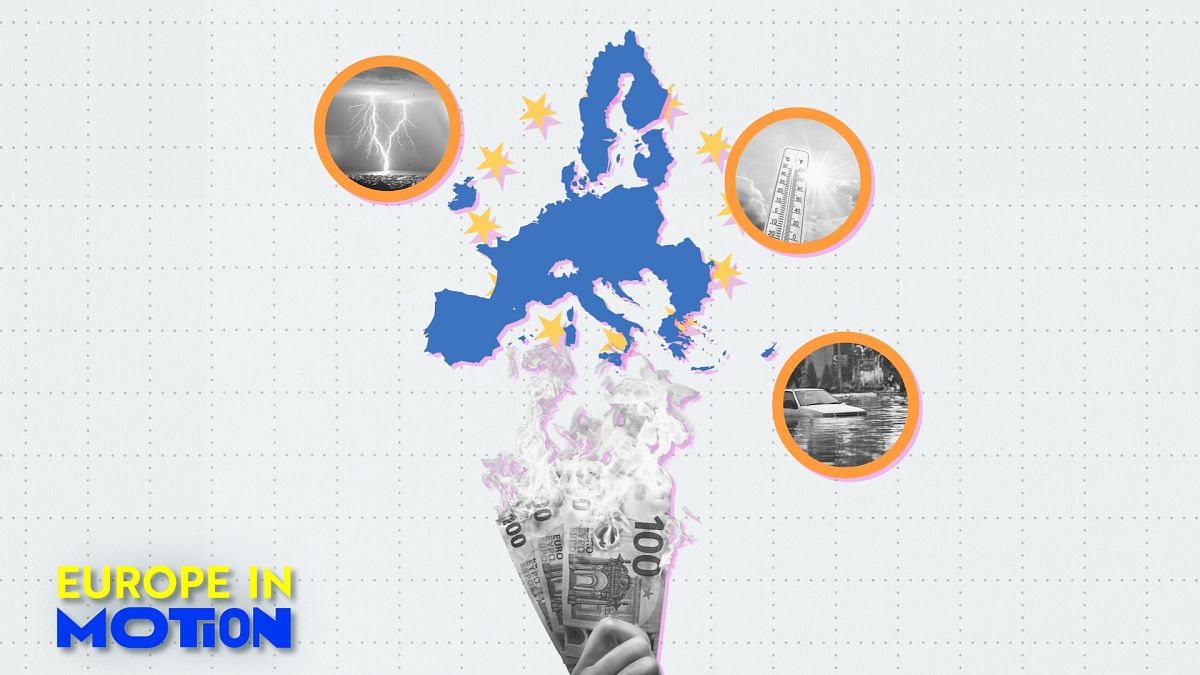Europe has experienced over €790 billion in economic losses due to extreme weather and climate-related events from 1980 to 2023, according to a new European Environment Agency (EEA) report.
Germany suffered the highest total economic losses during this period, with costs amounting to €180 billion.
It is followed by Italy, with costs mounting to €135 billion, France at €130 billion, and Spain, which suffered a loss of €97 billion due to such events.
However, the picture changes slightly for the 21st century.
Taking only losses occurring this century, Germany, Italy, France, and Spain are followed by a group of six EU countries (Austria, Belgium, Czechia, Portugal, Romania, and Slovenia), which incurred very similar total losses amounting to between €12 billion and €15 billion.
The United Nations’ Intergovernmental Panel on Climate Change (IPCC) estimates that the intensity and frequency of climate extremes have increased in some European regions and are projected to continue rising with further global warming.
Floods and heatwaves have been the primary causes of economic damage across the EU.
While larger economic losses in wealthier and more developed countries may seem significant, they tend to have a smaller impact on the nationwide economy compared to smaller losses suffered by poorer, less developed nations.
Wealthier countries tend to allocate a smaller portion of their public budgets for recovery, or may be better equipped to handle such losses.
Western and central European countries, such as Slovenia, Belgium, and Germany, experience higher losses per square kilometre, while eastern and northern countries like Finland and Estonia tend to suffer less financially.
Meanwhile, Slovenia has the highest losses per capita in Europe, amounting to €8,733 between 1980 and 2023.
This is followed by Luxembourg (€2,694), Switzerland (€2,685), Italy (€2,330) and Spain (€2,279).
On the other hand, Kosovo (€10), Montenegro (€41), and Iceland (€87) are the countries with the lowest losses per capita.
“Losses per capita vary less than losses per square kilometre and several countries have relatively similar values,” the EEA research stated.
Climate risk insurance
Most European countries have private insurance to protect against climate-related natural hazards.
Climate insurance can offer regional entities, governments, institutions, companies, community groups, households and individuals protection against loss of life, livelihood or assets caused by extreme weather events.
It ensures rapid post-disaster payments to the insured individual, household, community group, company, institution, government or regional entity.
For the 27 EU member states, the average of insured losses increased over time from €2.5 billion in 2009 to €4 billion in 2023, according to the EEA.
For instance, France and Spain have national insurance systems revolving around public-private partnerships (Caisse Centrale de Réassurance, CCR and Consorcio de Compensación de Seguros, CCS, respectively).
However, at least 16 EU countries report an insurance protection gap above 90%.
Only Denmark has more than 50% of its losses covered by insurance.

